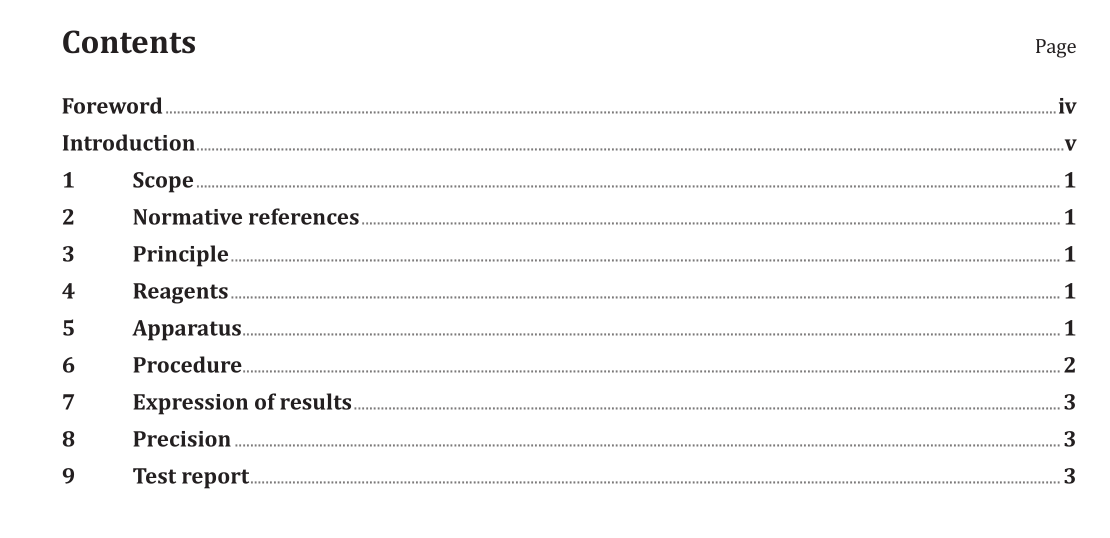ISO 4895:2014 pdf download.Plastics — Liquid epoxy resins — Determination of tendency to crystallize
1 Scope
This International Standard specifies a method for determining the tendency of liquid epoxy resins to crystallize. The tendency to crystallize is determined by observing, at specified time intervals, changes in fluidity and the onset of crystallization.
2 Normative references
The following documents, in whole or in part, are normatively referenced in this document and are indispensable for its application. For dated references, only the edition cited applies. For undated references, the latest edition of the referenced document (including any amendments) applies.
ISO 6353-2:1983, Reagents for chemical analysis — Part 2: Specifications — First series
ISO 6353-3:1987, Reagents for chemical analysis — Part 3: Specifications — Second series
3 Principle
Calcium carbonate powder is mixed with the liquid epoxy resin dissolved in ethanol. The mixture is kept at a specified low temperature and observed at specified time intervals to compare the changes in fluidity and crystallization.
4 Reagents
4.1 Calcium carbonate, as specified in ISO 6353-3:1987, R 53.
4.2 Ethanol, as specified in ISO 6353-2:1983, R 11.
5 Apparatus
5.1 Refrigerator or cold enclosure, maintained at (10 ± 2) °C.
5.2 Glass test tube, of capacity approximately 100 ml, 40 mm in diameter and 80 mm in height, with a polyethylene-covered stopper.
5.3 Glass rod, of hard glass, approximately 10 mm in diameter.
5.4 Oven.
5.5 Analytical balance, accurate to 0,01g.
5.6 Constant temperature room maintained at (23 ± 5)°C.
6 Procedure
6.1 Weigh 20 g of liquid epoxy resin into the test tube (5.2).
6.2 Stopper the test tube and place it in the oven (5.4) at (60 ± 2) °C for 16 h.
6.3 Cool the test tube to room temperature [(23 ± 5) °C] in the constant temperature room (5.6), add 20 g of calcium carbonate (4.1) and 2 g of ethanol (4.2), and mix the sample thoroughly with the glass rod for 2 min.
6.4 Stopper the test tube again and place it in the vertical position in the refrigerator or cold enclosure (5.1) at (10 ± 2) °C.
6.5 Observe the sample twice a day at a specified time (for example at an interval of 8 h during the day and 16 h during the night):
— to start at 9 am;
— to carry out first observation at 5 pm;
— to carry out second observation at 9 am (next day);
— to carry out third observation at 5 pm (next day);
— to carry out fourth observation at 9 am (the day after).
Observe the sample in the following way.
Allow the test tube to warm to room temperature [(23 ± 5) °C] in the constant temperature room (5.6),then place it in the horizontal position and leave it for 1 min.
— When the distance of movement of the liquid surface tip (L in Figure 1) is 10 mm and more, record “a”.
— When the distance of movement of the liquid surface tip (L in Figure 1) is less than 10 mm, record “b”.
— When the sample has completely solidified due to crystallization, record “c”.
ISO 4895:2014 pdf download
